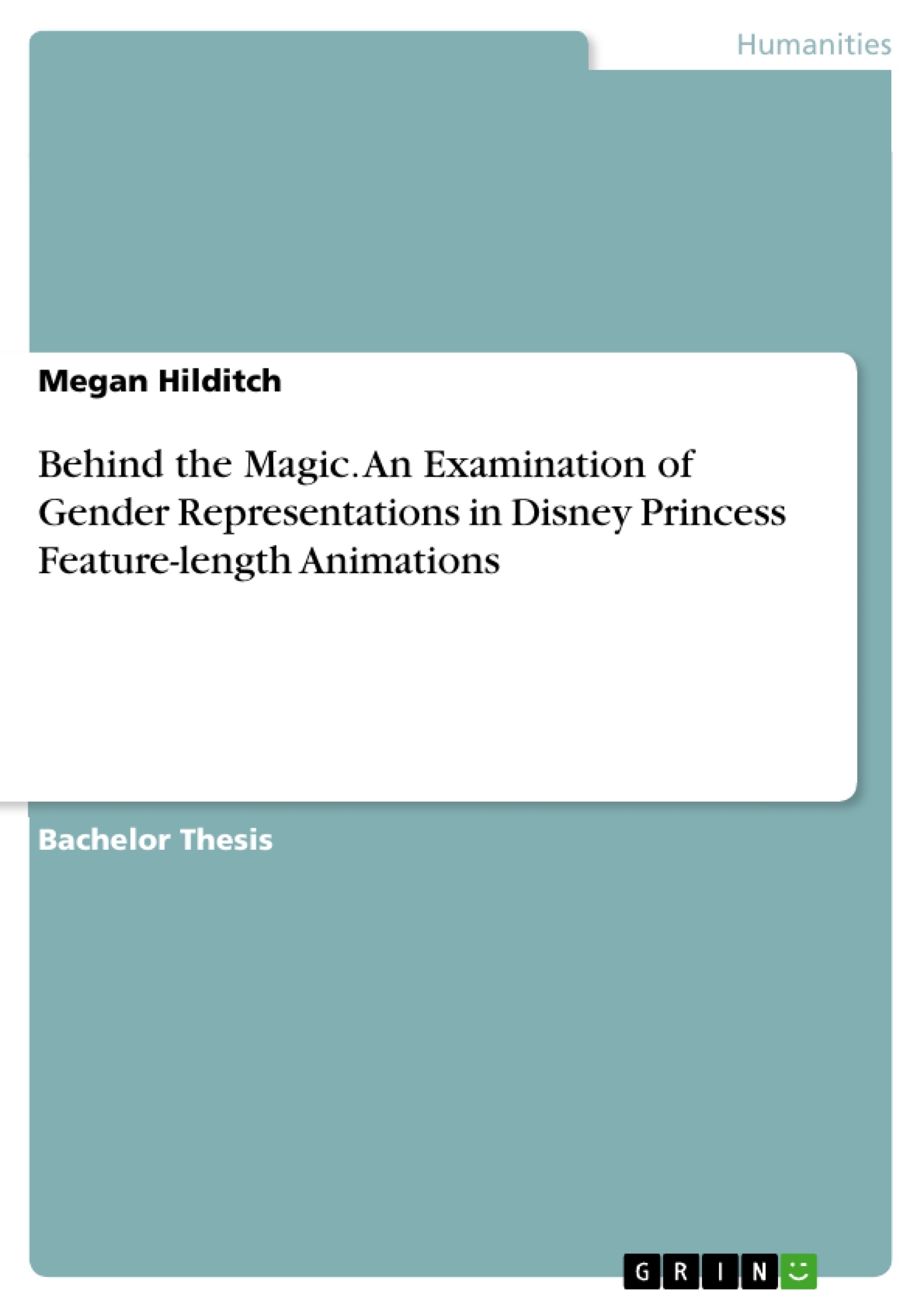This study offers an examination of gender representations present in the Disney feature-length animations incorporated into the Princess Collection. The import of such films has become increasingly relevant in recent years due to the increased anxiety around media representations and the development of the Princess franchise into a dominant aspect of Disney. In an attempt to test the claims of the existing debate and update the discussion through the inclusion of male protagonists, as well as female, the method of content analysis was adopted to conduct an in-depth analysis of: Snow White and the Seven Dwarfs (1937), Beauty and the Beast (1991), and Frozen (2013). This choice of films enables us to trace how these representations have changed over time to reflect the changing attitudes of gender in mainstream society, to answer the question of; to what extent do Disney princes and princesses represent traditional gender stereotypes?
After data was collected the results of the content analysis were interpreted by drawing on literature and situating them within their historical context. The findings have shown that these princesses have evolved
from passive damsels in distress to much more active, dynamic heroines. Whilst the male characters were found to have experienced less change but have become more feminised. However, both were found to still be influenced by traditional stereotypical ideas.
Table of Contents
- Chapter One: Introduction
- The Development of the ‘Mouse House'
- Happily Ever After
- Chapter 2: Investigating Gender
- Stereotypical Ideas of Gender
- Explaining Gender Differences
- Gender in Hollywood Cinema
- Gender Stereotypes in Disney
- Chapter 3: The Study
- Methodology
- Findings
- Chapter 4: Discussion
- The Damsel in Distress and the Knight in Shining Armour
- The Independent Heroine and the Feminised Man
- The Post-Feminist Era?
Objectives and Key Themes
This study aims to investigate the portrayal of gender in Disney's feature-length animations that are part of the Princess Collection. It aims to assess the extent to which the princes and princesses in these films conform to traditional gender stereotypes. The study will specifically examine how these representations have evolved over time, reflecting the changing attitudes towards gender in mainstream society.
- The socialising function of media sources and its impact on children
- The evolution of Disney and its princess franchise
- The influence of gender stereotypes in Disney animated films
- The impact of Disney's cultural influence on children's entertainment
- The portrayal of gender in Hollywood cinema and its impact on societal norms
Chapter Summaries
Chapter One introduces the study and its focus on the gender representations in Disney Princess films. It explores the rise of Disney as a cultural force and the development of the princess franchise. This chapter situates the study within the broader context of the debate on gender in media and the socialising function of children's entertainment. Chapter Two delves into the concept of gender stereotypes, examining their historical development and their influence on societal norms. It discusses how these stereotypes have been portrayed in Hollywood cinema and explores the criticisms directed at Disney films for their depiction of gender.
Chapter Three outlines the methodology employed in the study. It details the content analysis conducted on three Disney Princess films: Snow White and the Seven Dwarfs (1937), Beauty and the Beast (1991), and Frozen (2013). The chapter briefly discusses the initial findings and the methods used for data collection and analysis.
Chapter Four delves into the interpretation of the findings. It explores how the Disney princesses have evolved from passive damsels in distress to more active and dynamic characters. It also discusses the portrayal of male characters and whether they have experienced similar changes. The chapter concludes with a critical analysis of the findings in the context of contemporary society and its evolving understanding of gender.
Keywords
This study centers on the key concepts of gender representation, Disney animation, princess franchise, content analysis, gender stereotypes, Hollywood cinema, and the evolution of gender roles in society. It explores the impact of media representation on children and the cultural significance of Disney's productions.
- Quote paper
- Megan Hilditch (Author), 2017, Behind the Magic. An Examination of Gender Representations in Disney Princess Feature-length Animations, Munich, GRIN Verlag, https://www.grin.com/document/373435



